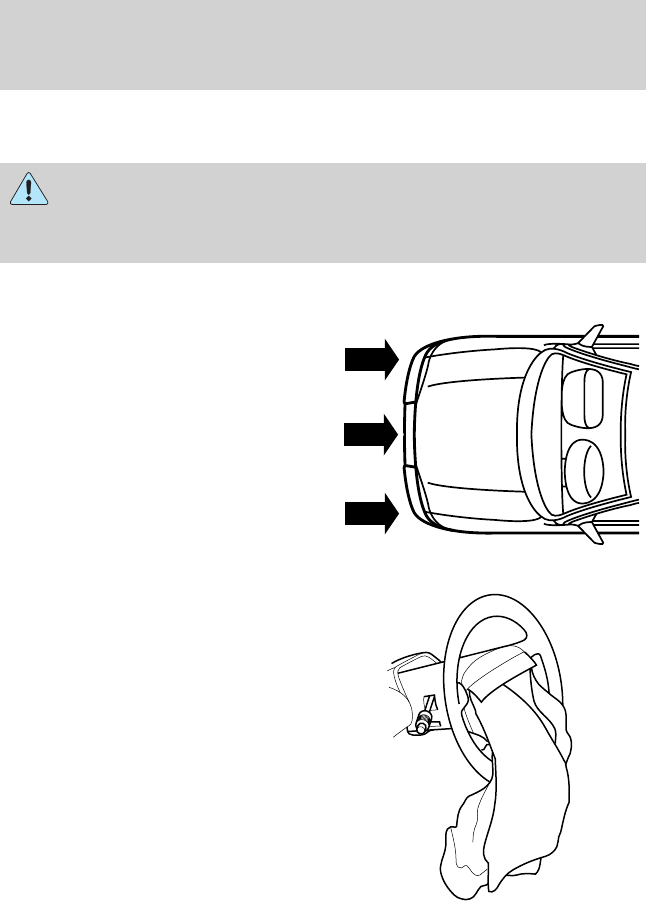Ford 2003 F-150 v.4 Manuel d'utilisateur Page 114
- Page / 280
- Table des matières
- MARQUE LIVRES
Noté. / 5. Basé sur avis des utilisateurs



Children must always be properly restrained. Failure to follow these
instructions may increase the risk of injury in a collision.
An infant in a rear-facing seat faces a high risk of serious or fatal
injuries from a deploying passenger air bag. Rear facing infant
seats should NEVER be placed in the front seats, unless the passenger
air bag is turned off. See Passenger air bag ON/OFF switch.
How does the air bag supplemental restraint system work?
The air bag SRS is designed to
activate when the vehicle sustains
sufficient longitudinal deceleration.
The fact that the air bags did not
inflate in a collision does not mean
that something is wrong with the
system. Rather, it means the forces
were not of the type sufficient to
cause activation. Air bags are
designed to inflate in frontal and
near-frontal collisions, not rollover,
side-impact, or rear-impacts.
The air bags inflate and deflate
rapidly upon activation. After air bag
deployment, it is normal to notice a
smoke-like, powdery residue or
smell the burnt propellant. This may
consist of cornstarch, talcum
powder (to lubricate the bag) or
sodium compounds (e.g., baking
soda) that result from the
combustion process that inflates the
air bag. Small amounts of sodium
hydroxide may be present which
may irritate the skin and eyes, but
none of the residue is toxic.
While the system is designed to help
reduce serious injuries, it may also
cause minor abrasions, swelling or temporary hearing loss. Because air
bags must inflate rapidly and with considerable force, there is the risk of
death or serious injuries such as fractures, facial and eye injuries or
Seating and Safety Restraints
114
- Table of Contents 1
- Introduction 10
- Instrument Cluster 12
- Entertainment Systems 20
- Climate Controls 39
- Driver Controls 55
- Locks and Security 78
- Seating and Safety Restraints 100
- Roadside Emergencies 174
- Customer Assistance 197
- Cleaning 207
- • 4.6L/5.4L engine 221
- • 4.2L engine 221
- COLD FILL 227
- (R+M)/2 METHOD 235
- ADD COLD HOT DO NOT ADD 245
- XXXXXXXXXXXXXXXXX 266
- Accessories 268
 (280 pages)
(280 pages)







Commentaires sur ces manuels